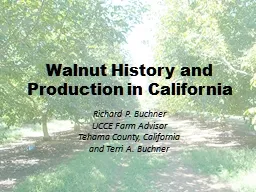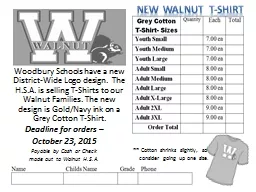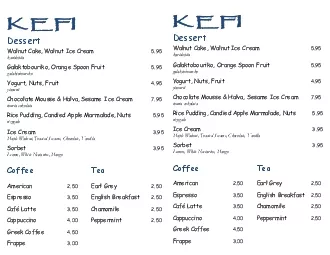PPT-Walnut History and Production in California
Author : giovanna-bartolotta | Published Date : 2016-08-10
Richard P Buchner UCCE Farm Advisor Tehama County California a nd Terri A Buchner Historical accounts of walnuts in California mention the hardshelled walnuts brought
Presentation Embed Code
Download Presentation
Download Presentation The PPT/PDF document "Walnut History and Production in Califor..." is the property of its rightful owner. Permission is granted to download and print the materials on this website for personal, non-commercial use only, and to display it on your personal computer provided you do not modify the materials and that you retain all copyright notices contained in the materials. By downloading content from our website, you accept the terms of this agreement.
Walnut History and Production in California: Transcript
Download Rules Of Document
"Walnut History and Production in California"The content belongs to its owner. You may download and print it for personal use, without modification, and keep all copyright notices. By downloading, you agree to these terms.
Related Documents












![[PDF READ ONLINE] PELLETB Test Prep California: California POST Exam Study Guide and Practice](https://thumbs.docslides.com/1017695/pdf-read-online-pelletb-test-prep-california-california-post-exam-study-guide-and-practice.jpg)
![Download Book [PDF] Texas vs. California: A History of Their Struggle for the Future of](https://thumbs.docslides.com/1019120/download-book-pdf-texas-vs-california-a-history-of-their-struggle-for-the-future-of-america-a.jpg)
